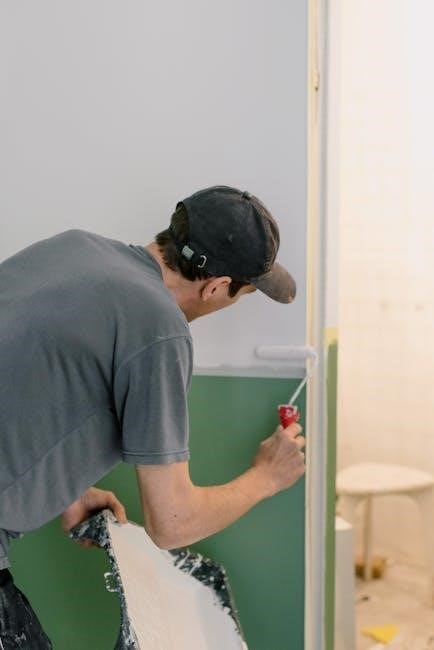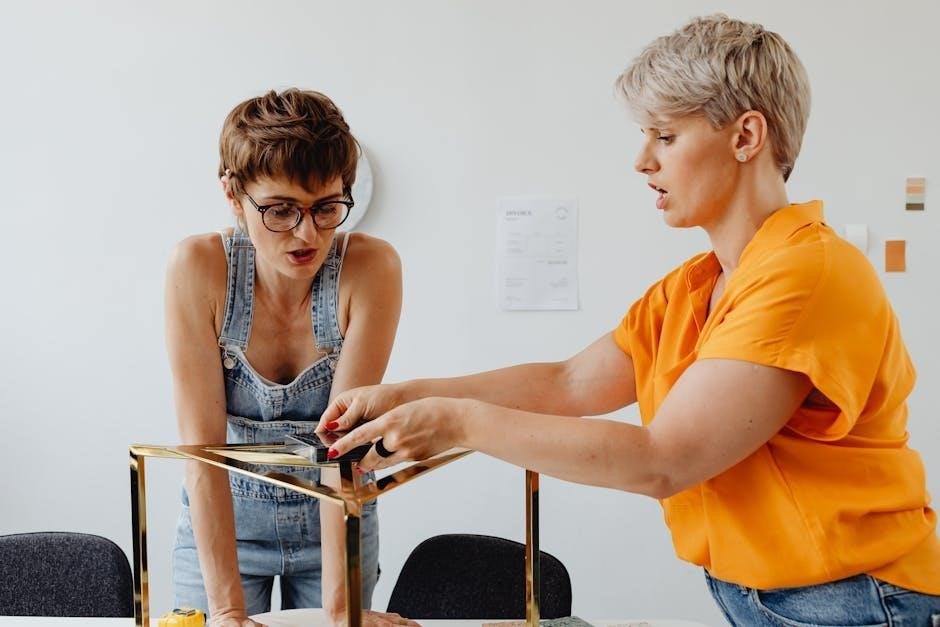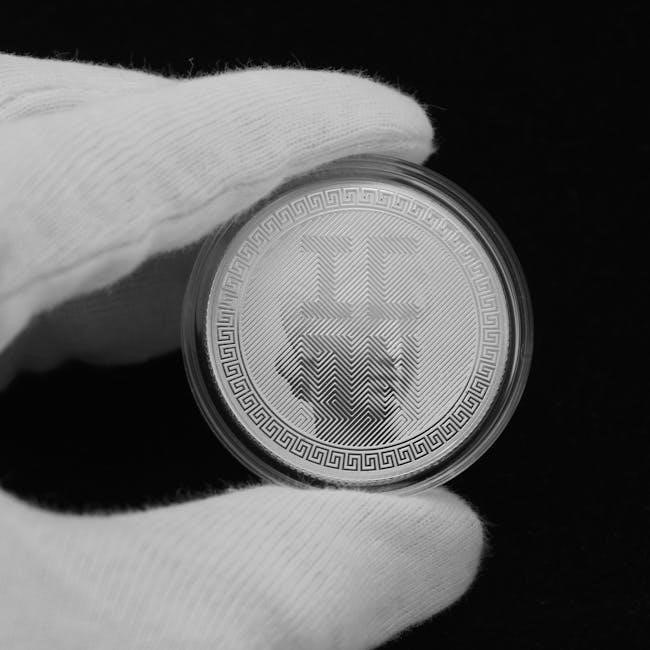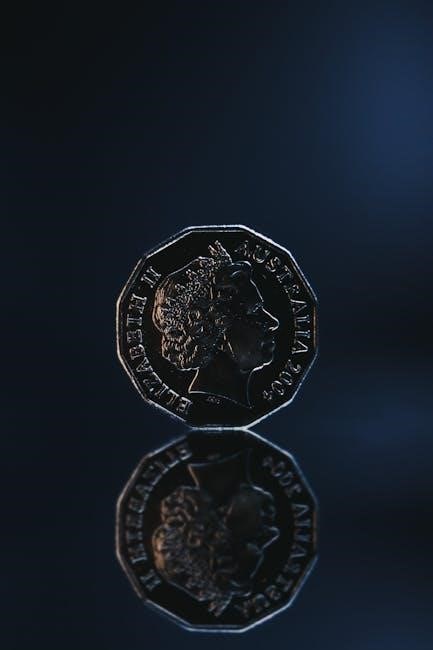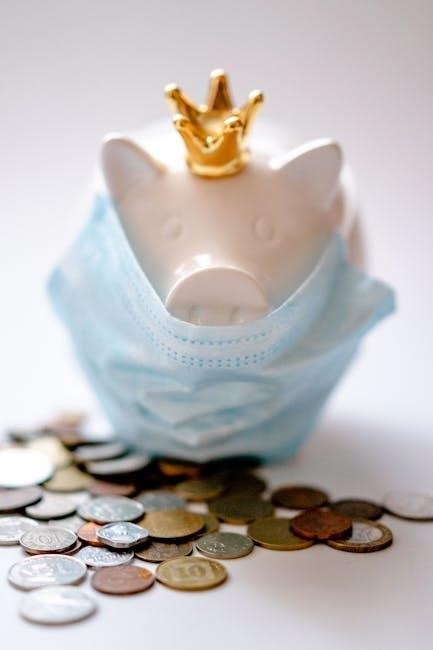peabody scoring manual pdf
The Peabody Developmental Motor Scales (PDMS) are a widely recognized tool for assessing motor skills in children from birth to 5 years of age. The PDMS-2, or Second Edition, is the most commonly used version, providing a comprehensive evaluation of both gross and fine motor abilities. The assessment is divided into six subtests: Reflexes, Stationary, Locomotion, Object Manipulation, Grasping, and Visual-Motor Integration. These subtests are designed to measure interrelated motor skills, ensuring a thorough understanding of a child’s developmental progress.
The PDMS-2 Scoring Manual is an essential resource for professionals, offering standardized criteria for scoring and interpreting test results. It ensures consistency and accuracy in assessing motor development, helping identify children who may need early intervention. By providing clear guidelines, the manual supports occupational therapists, psychologists, and educators in making informed decisions. The PDMS-2 has been validated internationally, making it a reliable tool for evaluating motor development in diverse populations.

History and Development of PDMS
The Peabody Developmental Motor Scales (PDMS) were first introduced in 1983 by authors Folio and Fewell as a tool to assess motor skills in young children. The original PDMS was designed to evaluate both gross and fine motor abilities through a series of structured tasks. Over the years, the scales have undergone revisions to improve their validity, reliability, and applicability. The PDMS-2, released in 2000, incorporated feedback from users and advances in research, refining the assessment process and expanding its utility. This second edition introduced standardized scoring procedures and clearer guidelines for administration. More recently, the PDMS-3, launched in 2023, further enhanced the assessment by adding training modules and expanding the age range. Each iteration of the PDMS has built on its predecessor, ensuring it remains a gold standard for evaluating motor development in early childhood.
2.1 Development Over Time

The Peabody Developmental Motor Scales (PDMS) have undergone significant development over the years, evolving from a groundbreaking assessment tool to a widely recognized standard in the field of motor skills evaluation. The creation of the PDMS was driven by the need for a comprehensive and reliable method to assess motor development in young children, particularly those with developmental delays or disabilities. The original PDMS, introduced in 1983 by authors Robert J. Folio and Rebecca R. Fewell, was the result of extensive research and clinical experience. It was designed to evaluate both gross and fine motor skills in children from birth to 7 years of age, providing a structured framework for professionals to identify developmental milestones and detect potential motor impairments.
The development of the PDMS was influenced by the growing understanding of child development and the increasing recognition of the importance of early intervention. During the 1970s and 1980s, there was a surge in research on motor development, highlighting the critical role of motor skills in overall child development. The PDMS was one of the first tools to systematically address this need, offering a standardized approach to motor assessment. Its initial design incorporated input from occupational therapists, physical therapists, and special education professionals, ensuring that it met the practical needs of clinicians working with children. The original PDMS consisted of 170 items divided into two scales: the Gross Motor Scale and the Fine Motor Scale. Each scale was further subdivided into subsystems, such as reflexes, balance, coordination, and object manipulation, allowing for a detailed evaluation of motor abilities.

Over time, the PDMS has been updated to reflect advances in research and clinical practice. The first revision, the PDMS-2, was published in 2000. This updated version incorporated feedback from users and addressed the need for improved reliability and validity. The PDMS-2 introduced standardized scoring procedures, making it easier for professionals to interpret results and compare them with normative data. Additionally, the revised edition expanded the age range to include children up to 8 years and 11 months, increasing its applicability; The PDMS-2 also introduced a new scoring software, which streamlined the administration and scoring process, reducing the time required for assessments and enhancing accuracy.
The most recent edition, the PDMS-3, was released in 2023 and represents the latest advancement in motor assessment. This version builds on the foundation of its predecessors while incorporating contemporary research and clinical insights. The PDMS-3 introduces new items and tasks to better reflect the motor abilities of children in the 21st century, including updated norms and improved scoring guidelines. It also places greater emphasis on early identification and intervention, aligning with current best practices in early childhood education and special education. The PDMS-3 is accompanied by enhanced training materials, including online modules and workshops, to ensure that professionals are well-prepared to administer and interpret the scales effectively.
Throughout its development, the PDMS has remained committed to its core principles of comprehensiveness, reliability, and usability. Each revision has addressed emerging needs in the field while maintaining the integrity of the original design. The PDMS has become a trusted tool for occupational therapists, physical therapists, early childhood educators, and researchers, providing valuable insights into the motor development of children. Its enduring popularity is a testament to its ability to adapt to changing demands and its continued relevance in supporting children with diverse motor abilities.

2.2 Editions of PDMS
The Peabody Developmental Motor Scales (PDMS) have undergone several editions since their inception, each reflecting advancements in research and clinical practice. These editions have been meticulously developed to enhance the accuracy, reliability, and usability of the assessment tool for evaluating motor skills in children.
PDMS-1 (1983)
The first edition of the PDMS, published in 1983, marked the introduction of a comprehensive tool for assessing motor development in children from birth to 7 years of age. This edition laid the groundwork by establishing standardized methods for evaluating both gross and fine motor skills. It was designed to help professionals identify developmental milestones and detect potential motor impairments early on, facilitating timely intervention.
PDMS-2 (2000)
The second edition, released in 2000, incorporated feedback from users and addressed the need for improved reliability and validity. The PDMS-2 introduced standardized scoring procedures, making it easier for professionals to interpret results and compare them with normative data. This edition expanded the age range to include children up to 8 years and 11 months, increasing its applicability. Additionally, it introduced a new scoring software, which streamlined the administration and scoring process, reducing the time required for assessments and enhancing accuracy.
PDMS-3 (2023)
The most recent edition, the PDMS-3, was released in 2023 and represents the latest advancement in motor assessment. This version builds on the foundation of its predecessors while incorporating contemporary research and clinical insights. The PDMS-3 introduces new items and tasks to better reflect the motor abilities of children in the 21st century, including updated norms and improved scoring guidelines. It also places greater emphasis on early identification and intervention, aligning with current best practices in early childhood education and special education. The PDMS-3 is accompanied by enhanced training materials, including online modules and workshops, to ensure that professionals are well-prepared to administer and interpret the scales effectively.
Each edition of the PDMS has been thoughtfully revised to address the evolving needs of professionals and the children they serve. By continually updating and refining the assessment tool, the PDMS remains a vital resource for promoting early identification, intervention, and support for children with motor delays or disabilities.

The Peabody Scoring Manual
The Peabody Scoring Manual is an essential resource designed to accompany the Peabody Developmental Motor Scales (PDMS), providing detailed guidelines for accurately scoring and interpreting the results of motor skills assessments in children. This manual is a crucial tool for professionals such as occupational therapists, physical therapists, early childhood educators, and psychologists who work with children from birth to 8 years and 11 months. By following the structured approach outlined in the manual, users can ensure consistency and reliability in their assessments, which is vital for identifying developmental delays and planning appropriate interventions.
Key Components of the Peabody Scoring Manual
The Peabody Scoring Manual is divided into several key sections, each addressing specific aspects of the assessment process. The first section provides an overview of the theoretical foundation of the PDMS, explaining the importance of motor development in early childhood and how the scales align with current research and clinical practices. This foundational knowledge helps users understand the rationale behind the assessment items and the scoring criteria.

The bulk of the manual is dedicated to detailed scoring instructions for both the Gross Motor and Fine Motor scales of the PDMS. Each item within these scales is thoroughly described, with clear definitions of the criteria used to determine whether a child has mastered a particular skill. The manual also includes examples of typical and atypical performance, which serve as valuable references for professionals who may be less experienced in administering the PDMS.
In addition to the scoring guidelines, the manual offers practical advice on how to administer the assessment in a standardized manner. This includes tips for creating an appropriate testing environment, engaging children during the assessment, and minimizing potential sources of bias. By adhering to these administration guidelines, professionals can ensure that the results accurately reflect a child’s true motor abilities.
Interpreting Results
One of the most critical functions of the Peabody Scoring Manual is its role in helping users interpret the results of the PDMS. The manual provides step-by-step instructions for calculating raw scores, converting them into standard scores, and determining percentile ranks. These calculations allow professionals to compare a child’s performance to that of same-aged peers, identifying areas of strength and weakness.

Interpretative guidelines are also included, offering suggestions for how to communicate results to parents, educators, and other stakeholders. The manual emphasizes the importance of presenting findings in a clear and compassionate manner, avoiding technical jargon that may be confusing to non-professionals. This ensures that all parties involved in a child’s care can understand the implications of the assessment and work collaboratively to support the child’s development.
Updates and Revisions
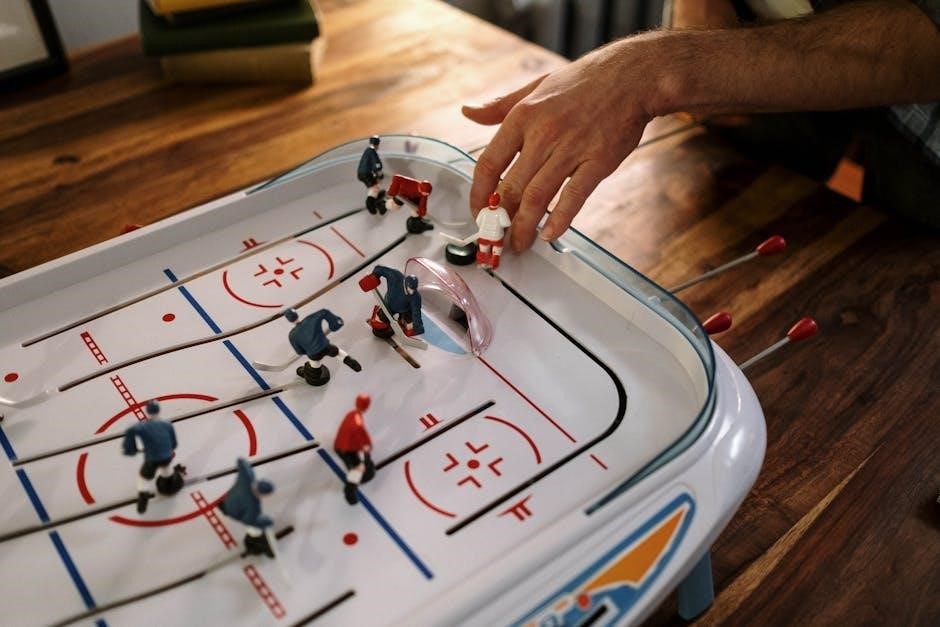
Like the PDMS itself, the Peabody Scoring Manual has undergone revisions to reflect advancements in the field of motor development and to address feedback from users. The most recent edition of the manual incorporates updated normative data, ensuring that the scoring criteria remain relevant and accurate. Additionally, the manual now includes expanded guidelines for assessing children with diverse abilities and backgrounds, making it a more inclusive and flexible resource for professionals working in varied settings.
Training and Resources

Recognizing that accurate administration and scoring of the PDMS require specific skills, the Peabody Scoring Manual is often used in conjunction with training workshops and online resources. These opportunities provide professionals with hands-on practice and the chance to ask questions, ensuring that they feel confident and competent in their use of the assessment tool. The manual itself serves as a reference guide during these training sessions, reinforcing the key concepts and procedures discussed.
Practical Applications
The Peabody Scoring Manual is not merely a theoretical guide; it is a practical resource that supports professionals in their daily work with children. By providing clear, evidence-based instructions, the manual enables users to make informed decisions about a child’s motor development, whether it’s identifying the need for early intervention, monitoring progress over time, or evaluating the effectiveness of specific therapies or educational strategies.


